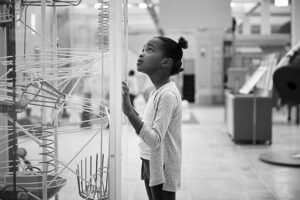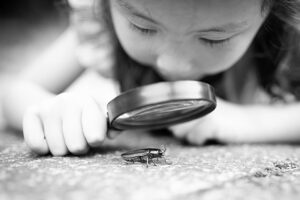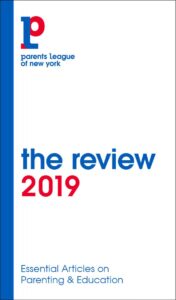STEM, STEAM: What Does It All Mean?

A prerequisite for success in today’s economy is a high quality education, particularly in the areas of science, technology, engineering and mathematics (STEM). Not only must students master the basics, they must become critical thinkers, problem identifiers and problem solvers. Whether we are considering population growth, the telecom industry, or global market economies, our changing world is STEM-dependent.
And that means that our future workforce will rely on STEM skills to succeed. Yet—despite predictions that, by 2022, 74 percent of new jobs will require computing skills—only 40 percent of schools in the United States teach computer programming1 and women still remain underrepresented in STEM fields.2 We need to ensure that our K-12 students today are given opportunities in the classroom to behave like scientists, engineers, technologists and mathematicians and to become scientifically literate citizens.
What to Look for in Your Child’s STEM Program
What do you look for when you want a strong STEM program? Some researchers would say it’s the teacher that matters most.3 Others have found it is the extent to which the school engages parents in their children’s education.4 I would suggest that you look for a proven5 integrated STEM program where science, technology, engineering and mathematics are taught under a cohesive whole—where your child can engage as directly as possible with scientific phenomena and be given opportunities to find solutions to complex engineering problems firsthand.
I would also look for ways in which art and reading are blended into STEM holistically—shifting STEM to STEAM and STEAM to STREAM. (Historians advocate for HAMSTER.)
So what makes one STEM, STEAM, STREAM or HAMSTER program better than another? At the Smithsonian Institution, we are proponents of an integrated approach to learning, in which every science topic can be deeply connected to the art, history and culture of the Smithsonian’s collections, exhibits and research centers. But ultimately, my advice is to not focus on the content taught, but on the processes used to teach the subjects. As my dear colleague and friend Dr. Sam Houston of the North Carolina Science, Mathematics, and Technology Education Center would say, STEM is “Strategies That Engage Minds.” He believes deeply that STEM is not about the content, but about whether students are given the opportunities to identify problems, think critically, solve problems, collect data, analyze data, draw conclusions, communicate findings to others, and apply these findings to new situations.

Research on Tactile vs. Digital STEM Learning
In my 2017 TEDx talk, I told the story of when I was a young child growing up in inner city Pittsburgh. My family did not have a lot of money and we didn’t go on vacation or attend summer camp. So my backyard became my laboratory. One day, my teacher told us that if you cut a planarian flatworm in half it would regenerate. So, there I was that afternoon, out in my backyard, looking under wet rocks, and cutting that flatworm in half—and sure enough, two weeks later, I had two flatworms. I can still remember that day as if it were yesterday. The flatworm was small, black. I had a makeshift petri dish. And the only reason I remember that fact about flatworms today is not because my teacher told it to me at school, but because I had the chance to experience it myself—firsthand.
But the problem is that most classrooms do not look like that backyard. They look like traditional classrooms where students are asked to read pages of text and memorize facts, only to realize 10 years later that any facts they did memorize have either now been forgotten or, in the face of new information, have since changed. (Remember Pluto, our dear demoted planet?)
In my TEDx talk, I also mentioned the cognitive power of physical objects, which often evoke personal histories and send us back in time, allowing us to encode information for long-term retrieval. In particular, experiences which involve engaging our perceptions of sight, sound, touch, smell or taste, coupled with strong and realistic context, stimulate a pattern of neural activity in our brains that help us remember the experiences with greater detail. Yet many of today’s schools still teach science isolated from mathematics, engineering and technology, and through traditional means of rote memorization. Science is inherently deeply connected to other domains, and schools should embrace pedagogies that provide multidisciplinary, multi-modal learning opportunities.
In our digital world, we can’t lose sight of the importance of tactile experiences in a science classroom. It’s not about resisting the shift to digital, but it is about finding ways that object-driven learning and digital learning can complement one another. Objects matter. “Stuff” matters.6
Science for Social Good
As a science educator at heart, I would be remiss if I didn’t also discuss the importance of teaming inquiry-based science education (IBSE) with civic learning and social emotional learning (SEL). When assessing your child’s science program, also ask whether students focus on the issues of critical importance, such as climate change, the health of the world’s oceans, and clean energy, while examining each issue from multiple perspectives. Educating youth about complex socio-scientific issues will help to inoculate young people and their teachers and parents against societal and health problems that can adversely affect their lives, especially when inspired and motivated by the universal call to action within the UN Sustainable Development Goals (SDGs). A good global studies program will not only teach students the science behind these complex issues, but will drive students’ capabilities to take action to use this science to do social good in their communities and the world.

STEM Questions to Ask on Your Next School Tour
So, the next time you tour a school or have a chance to assess your child’s school’s STEM offerings, ask the following questions:
What do you do to help young female (and male) students engage with mentors in STEM fields so that children can see themselves in others who might be role models?
How do you actively engage parents in your students’ STEM learning? (Make certain to ask for explanations of any buzz words, including “inquiry-based science education,” “project-based learning,” “hands-on learning” or “makerspace.”)
How many minutes per week do you teach science, technology, engineering or math? Are they integrated during the school day, or taught in isolation in separate periods?
What is your view on early STEM? (Waiting to teach STEM until after age 10 is too late.)
How do you engage students as directly as possible with scientific phenomena? How do you emphasize lifelong experiential STEM learning? Can you give an example of how students are expected to think critically? Solve real-world problems? How do you balance this with teaching the basics?
Do students get to behave like scientists, engineers, technologists and mathematicians in the classroom? Are there also opportunities to behave this way outside of the classroom (e.g., internships, fellowships, mentorships)? Can you provide an example?
What roles do art, literacy and reading, history, and civics education play in teaching science?
What role does sustainability, and specifically the UN Sustainable Development Goals, play in your school’s science education program? Do you believe that young students can be empowered to use their science knowledge to do social good and help solve world problems, even on a local scale? Can you provide an example?
Has there been a study of the STEM program you have adopted? If so, does it show any impacts on student learning and teacher practice?
Asking these questions—and exploring their answers—will help you find a school with a strong STEM program, one that engages children in critical thinking about the world around them from an early age. At such a school your child can engage firsthand, ask questions, collect data, reason from evidence, draw conclusions, and communicate those findings with others.
In short, your child can be a scientist. You will have sparked your child’s inner STEM.
Notes
- Bureau of Labor Statistics. (2018). Computer and Information Technology Occupations. U.S. Department of Labor, Bureau of Labor Statistics. bls.gov.
- Funk, C. & Parker, K. (2018). “Women and Men in STEM Often at Odds Over Workplace Equity.” Pew Research Center. pewresearch.org.
- Rivkin, S. G. et al. (2005). Teachers, Schools and Academic Achievement. Econometrica, 73(2), 417–458.
- U.S. Department of Education, Office of the Deputy Secretary, Planning and Evaluation Service, The Longitudinal Evaluation of School Change and Performance in Title I Schools, Volume 1: Executive Summary; Volume 2: Technical Report, Washington, D.C., 2001.
- Smithsonian Science Education Center. (2015). The LASER Model: A Systemic and Sustainable Approach for Achieving High Standards in Science Education. Executive Summary. Washington, DC: Smithsonian Institution. ssec.si.edu/laser-i3.O’Donnell, C. (2017). Focus on the Stuff: When you combine digital tools with hands-on activities, learning sticks. A Smithsonian expert tells how. ASCD SmartBrief: Washington, DC. ssec.si.edu/focus-stuff.
Carol O’Donnell, Ph.D., is the Director of the Smithsonian Science Education Center. She is a member of the InterAcademy Partnership Science Education Global Council, and serves on the part-time faculty of the Physics Department at The George Washington University.
This article first appeared in the 2019 issue of the Parents League Review. Get the current issue of the Review free with a family membership. Or purchase it separately.












